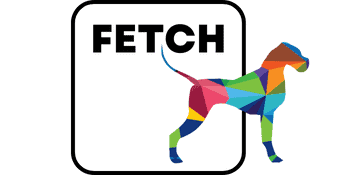
What is Retargeting and how does it work?
Reading Time: 5 minutesRetargeting is a powerful form of advertising that lets you follow up with your website visitors. Find out more about retargeting and how it can help your business below.
What is Retargeting and how does it work?
You probably spend a lot of energy and money to get traffic to your website while hoping and praying that each visitor will have the best experience and opt-in as a lead or make a purchase. The reality for many businesses though is that there are still a lot of people leaving websites without taking any action.
In fact, according to semrush, the average bounce rate is 49%? To put that in context, a score in the twenties and below is regarded as good. However, this is only one measure and it is true to say that not every website connects with the consumer on the first visit in a way that results in an immediate sale.
Many statistics out there at the moment show it takes 6-8 touches before someone purchases. Given this, wouldn’t it be nice to be able to follow up with all those people that didn’t purchase… automatically? This is where remarketing comes in, and it’s one of the most powerful ways to bring back your visitors to your website.
Retargeting is a form of advertising that allows you to target and display advertising to people who have already visited pages of your website.
To best explain it, lets look at the average user’s journey when using remarketing:
- Visitor goes to your website
- Visitor then browses your website and then leaves
- Visitor then spends time on other websites or searching the web (for whatever reason)
- Your businesses specific remarketing ad is displayed to them on other sites that they are looking at
- Visitor then return to your site via an optimised landing page – Ecomm store etc. Sending them to a single optimised page is done to keep a user focused on taking action.
Remarketing Ad Examples
While you can actually run remarketing campaigns with lots of ad types, the most common is display ads.
For example, the team at Advocate use Adobe and Andrew from our team recently visited their website, and then went on to Buzzfeed.com. While Andrew was on Buzzfeed he was targeted with Adobe retargeting ads promoting some of their training services. This isn’t because Adobe is running ads on BuzzFeed directly, it’s because Andrew is specifically being retargeted.
Now we know what remarketing is and what these ads can look like, let’s dive into how your business can benefit from remarketing advertising.
Benefits of Retargeting
There is an endless number of benefits to using retargeting in your marketing campaigns, but today, lets focus on what the team at Advocate believe are the most impactful.
Engaging with Past Visitors
Without remarketing, it is like you not following up with a lead that inquired about your service – something you simply wouldn’t allow to happen – so why do it with your website traffic and let that opportunity become a customer of one of your competitors.
Remarketing ads allow you to showcase your product or service 24/7 and nurture past visitors without you lifting a finger.
These are highly qualified customers since they’ve already seen your website, so we want to make sure we’re capturing people that weren’t convinced on the first visit!
Reduced CPC (Cost Per Click)
Here at Advocate we’ve managed hundreds of thousands of dollars for clients each on Google Ads, and the biggest question we get is “How can we reduce our CPC?”
You wouldn’t want to pay more for a click than you have to right? But you still want qualified traffic coming through the door. Right? Of course you do, but its worth remembering that it always costs more to market to COLD Traffic.
Cold traffic is someone who doesn’t know your brand, and doesn’t trust you yet to become a lead or purchase.
Now if you deploy remarketing efforts, you are marketing to people who are a bit warmer and know your brand. (They’ve already visited your website!), thus your CPC has the opportunity to dramatically drop.
Instead of running purely cold traffic ads, it is super important that a portion of your paid media budget should be used to remarket to people who have already seen their offer.
For any business that attracts visitors to their website, a small budget for remarketing can go a long way. Remarketing budgets are also a brilliant companion to the Search Engine Optimisation work that you (hopefully) are doing.
Retargeting best practices
The simplest remarketing campaign needs 3 pieces to be successful.
- An Audience
- Compelling Offer & Ad
- Destination Built For Conversions
Sticking to simplicity and optimising from the data results will get you much more success than most.
Creating your audience
The first thing that you need to do is create an audience. When creating a retargeting audience there are lots of options and this can be made as complex (or not) as required.
For instance, we could breakout audiences into segments based on specific pages viewed or specific actions they took.
We can also set the timeline of how long we want to remarket to them. For instance, in Google Ads you can retarget visitors up to 540 days since their last visit. (But we wouldn’t’ recommend this). For many, a great place to start is to just retarget all visitors that visited your website in the last 30 days.
Create a compelling offer and ad
Next, we need to grab the visitor’s attention on the web and make them come back to take action.
The goal of our ad is to grab attention and drive that click. Inside your ad make sure you’re using quality images and button colors that “pop” when looking at them.
The offer will be different for each type of business but here are a couple of quick examples.
- For service-based businesses, you can give a free quote or free consultation. It can also help to incentivise it with a limited time offer like a discount or bonus for opting in.
- For e-commerce, we have found that discounts on the product or offering free shipping works well. Plain and simple!
Destination
The final piece of the simple remarketing campaign is where to send the traffic after they click on the ad. To get the best conversion rates, you’re going to want to send them to a specific landing page that matches the ad.
Don’t make the mistake of simply sending them to your homepage!
The typical conversion rate for a website is 2.35% where dedicated landing pages can get anywhere from 8 – 25%+. The reason for this is the message is matched to traffic intent.
Your homepage usually has multiple buttons to click and your return visitor traffic now has to dig around to find what they’re looking for. So, instead, when they see an ad that advertises something specific, they should be brought to a page that matches exactly that.
Landing Page Best Practices
- Clear Headline that grabs attention and matches your ad.
- Social proof (Testimonials & Trust Badges)
- Simple and clear CTA (Call To Action)
- Simple Offer: Make sure your offer is clear.
- Desktop & Mobile Friendly
Product Page Best Practices
- Quality product images or videos
- Well written descriptions with bullets points
- Trust Badges (Secure Checkout, Reviews, Etc.)
- Large Purchase Button
- Desktop & Mobile Friendly
These are just the beginning but once again it covers the basics.
Conclusion
By using retargeting, you can automatically follow up with your website visitors and dramatically improve your conversions. Need some help setting up and managing retargeting for your website. Get in contact with one of our friendly experts today.
Post a Comment cancel reply
You must be logged in to post a comment.





